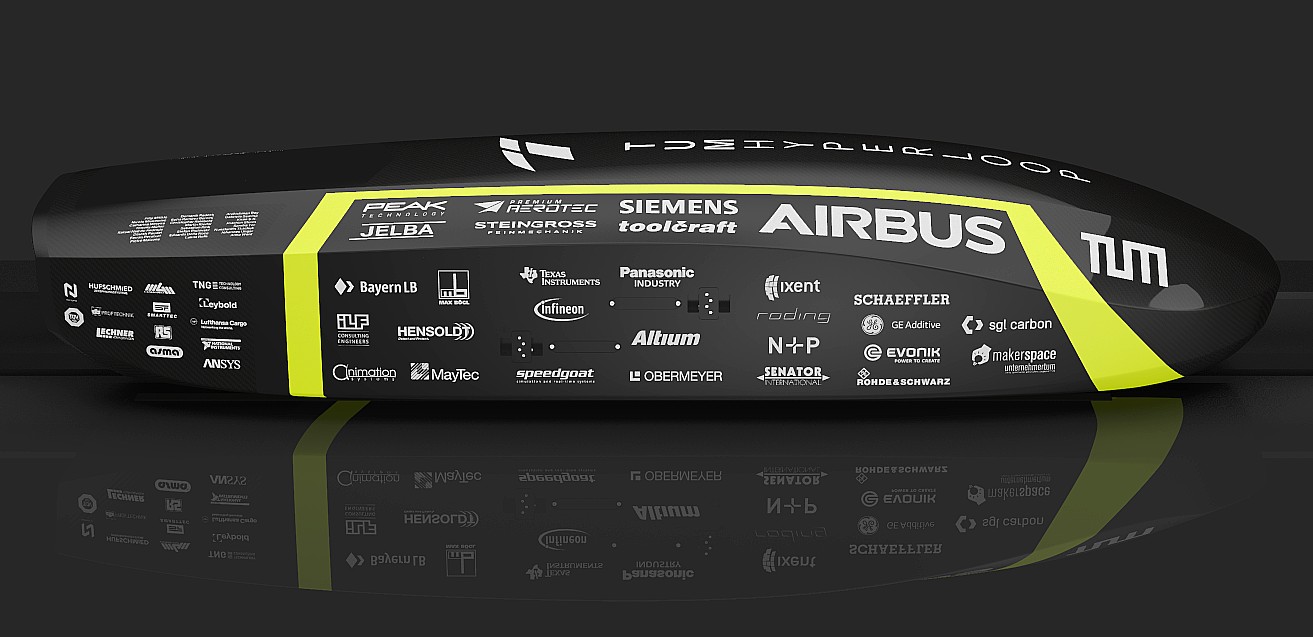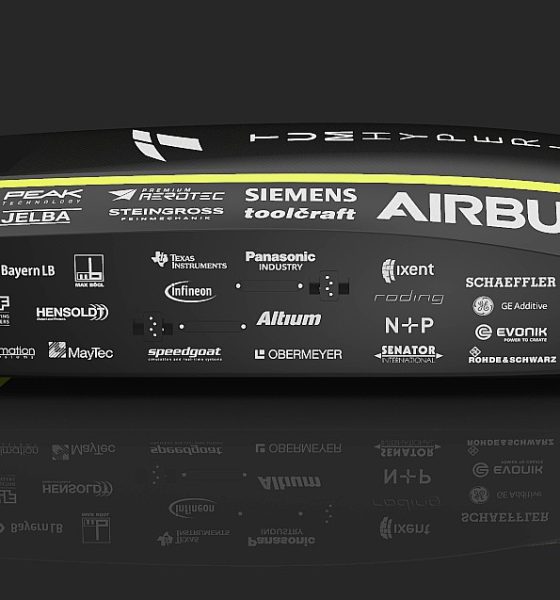

News
SpaceX’s returning Hyperloop champion prepares to hit 372 mph on July 21 competition
For the fourth year in a row, SpaceX will be holding its Hyperloop Pod Competition. The event, which features teams of students from universities across the globe, is expected to raise the game this year, with returning champion TUM Hyperloop (formerly WARR Hyperloop) from the Technical University of Munich looking to hit half the speed of sound with its upgraded pod.
TUM has been competing in SpaceX’s Hyperloop Pod Competitions since the first tournament was held in 2015. The team has created a reputation for creating incredibly quick pods over the years, even beating the 240 mph record set by Virgin Hyperloop in 2018 with an impressive 290 mph run. Even more notable was that TUM was able to accomplish this feat at SpaceX’s Hyperloop test track, which is only 0.8 miles long.
Inasmuch as this was impressive, the student team from Munich is not resting on their laurels this year. SpaceX requires returning participants to the Hyperloop Pod Competition to introduce upgrades and revisions to their past pod designs, and that is exactly what TUM did. The new pod, christened simply as Pod IV, is almost 1.70 meters (5.57 feet) long, 50 cm (19.6 inches) wide and weighs approximately 70 kg (154 lbs), almost 8 kg (17.6 lbs) lighter than 2018’s Pod III, which hit a record-setting speed of 290 mph the previous year.
In a press release, TUM Hyperloop Team Manager Toni Jukic stated that the team is looking to hit a highly ambitious goal this year. “This year we plan to reach at least half the speed of sound, over 600 kilometers per hour (372 mph),” he said. Putting that figure into perspective, Pod IV would have to go 40% faster than its pod last year, hitting 372 mph and decelerating to zero in 0.8 miles.
Ambitious goal aside, this year will likely not be easy for TUM Hyperloop, especially considering that among its competitors is the UNSW Hyperloop team from Australia, which has a pretty unique experience in terms of rapid sustainable transportation. The UNSW has seen success in other innovative transport solutions, with students from the university’s Sunswift team setting a new efficiency record at the World Solar Challenge using a solar racing car that completed a 4,100 km (2,500 mile) journey across Australia in just six days.
In a statement to The Driven, UNSW Hyperloop team manager Harry Zhang noted that the team had to work really hard to make it to SpaceX’s competition. “It was quite grueling because we had to apply to compete, then do several design packages over the summer and then finally get accepted in February to be invited to go to SpaceX’s headquarters in Hawthorne, California. The people who do compete and make it through the multiple rounds of elimination are quite revered in engineering around the world,” he said.
Another team that TUM Hyperloop would likely need to watch out for is Team Delft from the Netherlands. Delft won the coveted overall best pod award in SpaceX’s first Hyperloop Competition, and it was able to reach the finals last year together with TUM (then called Team WARR) and Team EPFLoop from Switzerland. Unfortunately, Delft experienced major issues in the finals, resulting in the team’s pod reaching speeds of only 88 mph before stalling. With a chance at redemption this year with a new, improved pod, Delft Hyperloop could be returning to the SpaceX Hyperloop Competition with a purpose.
The SpaceX Hyperloop Pod Competition is scheduled to be held on July 21, 2019 at the SpaceX headquarters in Hawthorne, CA. Similar to last year’s competition, participants for this year’s tournament will be judged on one key metric: top speed.

News
Tesla aims to combat common Full Self-Driving problem with new patent
Tesla writes in the patent that its autonomous and semi-autonomous vehicles are heavily reliant on camera systems to navigate and interact with their environment.

Tesla is aiming to combat a common Full Self-Driving problem with a new patent.
One issue with Tesla’s vision-based approach is that sunlight glare can become a troublesome element of everyday travel. Full Self-Driving is certainly an amazing technology, but there are still things Tesla is aiming to figure out with its development.
Unfortunately, it is extremely difficult to get around this issue, and even humans need ways to combat it when they’re driving, as we commonly use sunglasses or sun visors to give us better visibility.
Cameras obviously do not have these ways to fight sunglare, but a new patent Tesla recently had published aims to fight this through a “glare shield.”
Tesla writes in the patent that its autonomous and semi-autonomous vehicles are heavily reliant on camera systems to navigate and interact with their environment.

The ability to see surroundings is crucial for accurate performance, and glare is one element of interference that has yet to be confronted.
Tesla described the patent, which will utilize “a textured surface composed of an array of micro-cones, or cone-shaped formations, which serve to scatter incident light in various directions, thereby reducing glare and improving camera vision.”

The patent was first spotted by Not a Tesla App.
The design of the micro-cones is the first element of the puzzle to fight the excess glare. The patent says they are “optimized in size, angle, and orientation to minimize Total Hemispherical Reflectance (THR) and reflection penalty, enhancing the camera’s ability to accurately interpret visual data.”
Additionally, there is an electromechanical system for dynamic orientation adjustment, which will allow the micro-cones to move based on the angle of external light sources.
This is not the only thing Tesla is mulling to resolve issues with sunlight glare, as it has also worked on two other ways to combat the problem. One thing the company has discussed is a direct photon count.
CEO Elon Musk said during the Q2 Earnings Call:
“We use an approach which is direct photon count. When you see a processed image, so the image that goes from the sort of photon counter — the silicon photon counter — that then goes through a digital signal processor or image signal processor, that’s normally what happens. And then the image that you see looks all washed out, because if you point the camera at the sun, the post-processing of the photon counting washes things out.”
Future Hardware iterations, like Hardware 5 and Hardware 6, could also integrate better solutions for the sunglare issue, such as neutral density filters or heated lenses, aiming to solve glare more effectively.
Elon Musk
Delaware Supreme Court reinstates Elon Musk’s 2018 Tesla CEO pay package
The unanimous decision criticized the prior total rescission as “improper and inequitable,” arguing that it left Musk uncompensated for six years of transformative leadership at Tesla.

The Delaware Supreme Court has overturned a lower court ruling, reinstating Elon Musk’s 2018 compensation package originally valued at $56 billion but now worth approximately $139 billion due to Tesla’s soaring stock price.
The unanimous decision criticized the prior total rescission as “improper and inequitable,” arguing that it left Musk uncompensated for six years of transformative leadership at Tesla. Musk quickly celebrated the outcome on X, stating that he felt “vindicated.” He also shared his gratitude to TSLA shareholders.
Delaware Supreme Court makes a decision
In a 49-page ruling Friday, the Delaware Supreme Court reversed Chancellor Kathaleen McCormick’s 2024 decision that voided the 2018 package over alleged board conflicts and inadequate shareholder disclosures. The high court acknowledged varying views on liability but agreed rescission was excessive, stating it “leaves Musk uncompensated for his time and efforts over a period of six years.”
The 2018 plan granted Musk options on about 304 million shares upon hitting aggressive milestones, all of which were achieved ahead of time. Shareholders overwhelmingly approved it initially in 2018 and ratified it once again in 2024 after the Delaware lower court struck it down. The case against Musk’s 2018 pay package was filed by plaintiff Richard Tornetta, who held just nine shares when the compensation plan was approved.
A hard-fought victory
As noted in a Reuters report, Tesla’s win avoids a potential $26 billion earnings hit from replacing the award at current prices. Tesla, now Texas-incorporated, had hedged with interim plans, including a November 2025 shareholder-approved package potentially worth $878 billion tied to Robotaxi and Optimus goals and other extremely aggressive operational milestones.
The saga surrounding Elon Musk’s 2018 pay package ultimately damaged Delaware’s corporate appeal, prompting a number of high-profile firms, such as Dropbox, Roblox, Trade Desk, and Coinbase, to follow Tesla’s exodus out of the state. What added more fuel to the issue was the fact that Tornetta’s legal team, following the lower court’s 2024 decision, demanded a fee request of more than $5.1 billion worth of TSLA stock, which was equal to an hourly rate of over $200,000.
Delaware Supreme Court Elon Musk 2018 Pay Package by Simon Alvarez
News
Tesla Cybercab tests are going on overdrive with production-ready units
Tesla is ramping its real-world tests of the Cybercab, with multiple sightings of the vehicle being reported across social media this week.

Tesla is ramping its real-world tests of the Cybercab, with multiple sightings of the autonomous two-seater being reported across social media this week. Based on videos of the vehicle that have been shared online, it appears that Cybercab tests are underway across multiple states.
Recent Cybercab sightings
Reports of Cybercab tests have ramped this week, with a vehicle that looked like a production-ready prototype being spotted at Apple’s Visitor Center in California. The vehicle in this sighting was interesting as it was equipped with a steering wheel. The vehicle also featured some changes to the design of its brake lights.
The Cybercab was also filmed testing at the Fremont factory’s test track, which also seemed to involve a vehicle that looked production-ready. This also seemed to be the case for a Cybercab that was spotted in Austin, Texas, which happened to be undergoing real-world tests. Overall, these sightings suggest that Cybercab testing is fully underway, and the vehicle is really moving towards production.
Production design all but finalized?
Recently, a near-production-ready Cybercab was showcased at Tesla’s Santana Row showroom in San Jose. The vehicle was equipped with frameless windows, dual windshield wipers, powered butterfly door struts, an extended front splitter, an updated lightbar, new wheel covers, and a license plate bracket. Interior updates include redesigned dash/door panels, refined seats with center cupholders, updated carpet, and what appeared to be improved legroom.
There seems to be a pretty good chance that the Cybercab’s design has been all but finalized, at least considering Elon Musk’s comments at the 2025 Annual Shareholder Meeting. During the event, Musk confirmed that the vehicle will enter production around April 2026, and its production targets will be quite ambitious.








